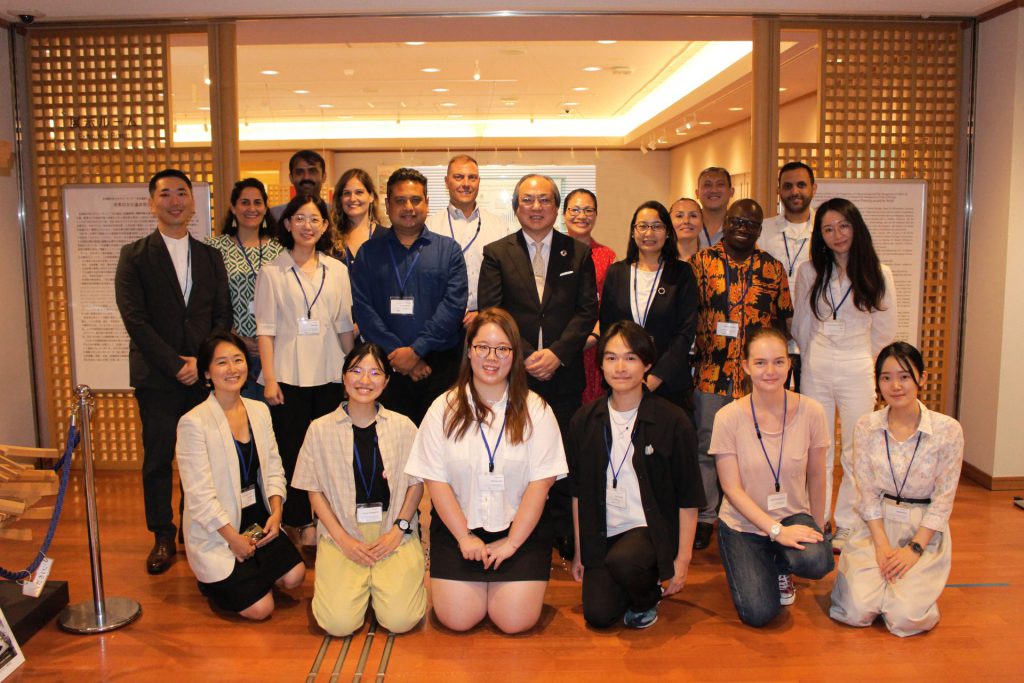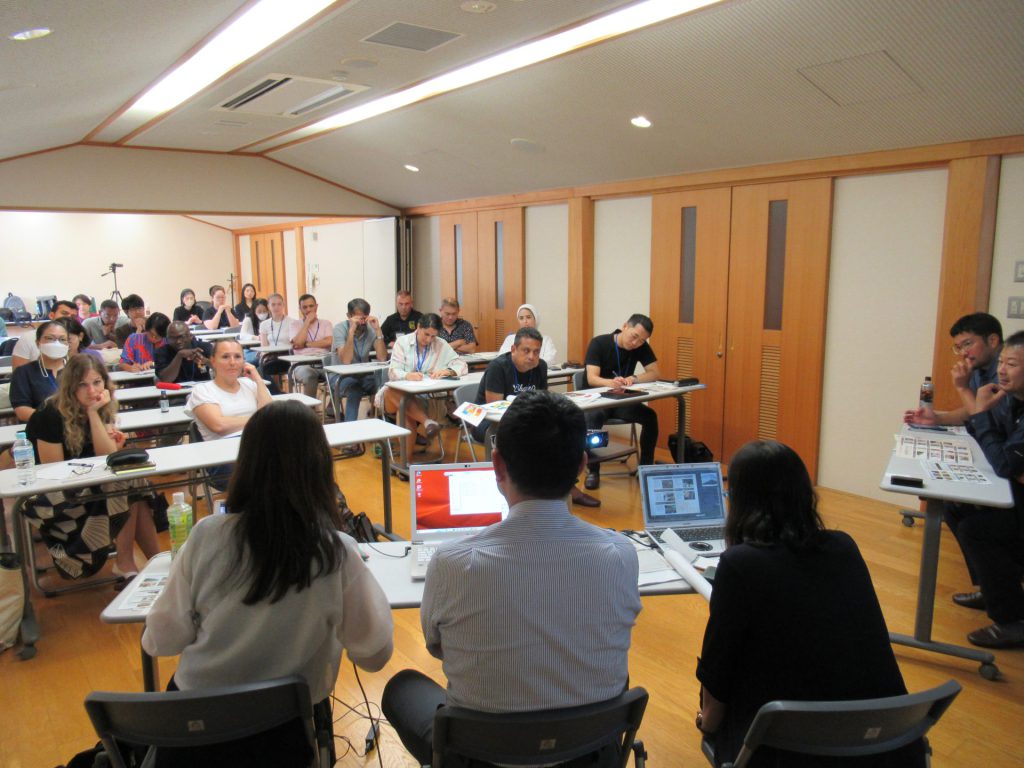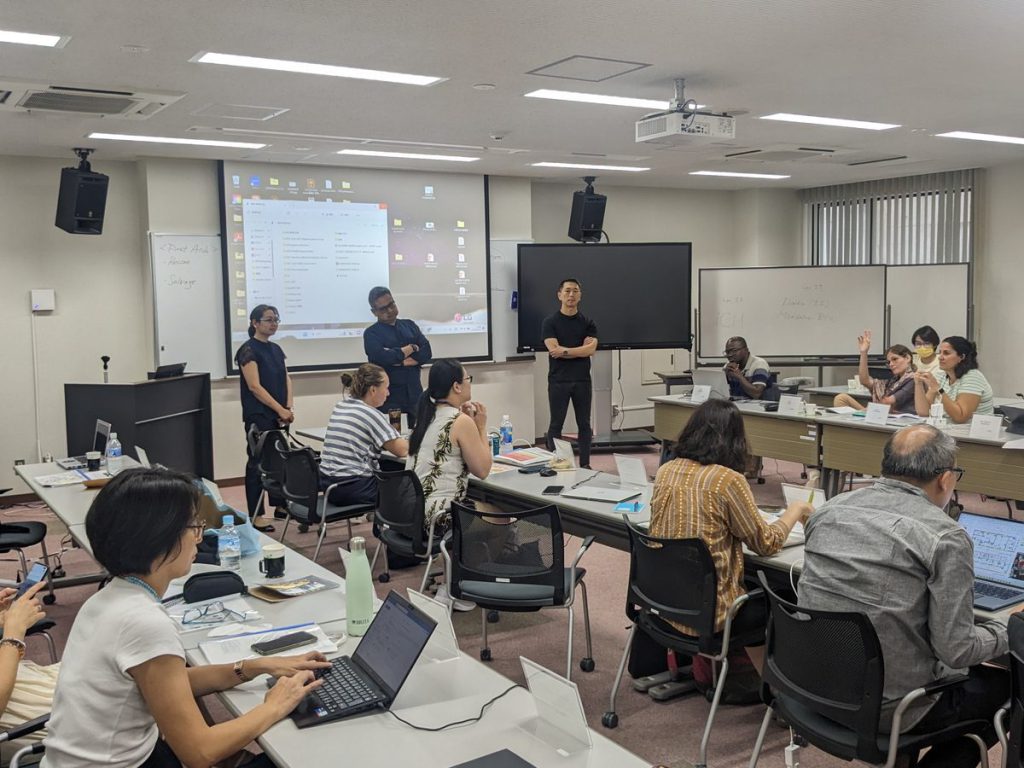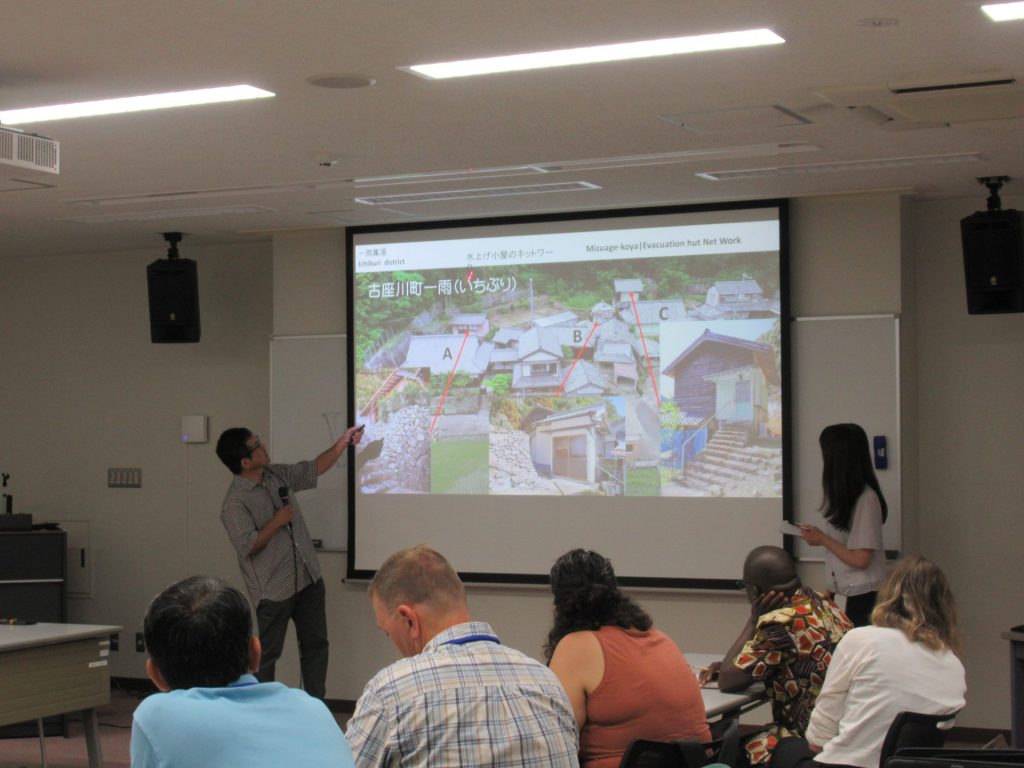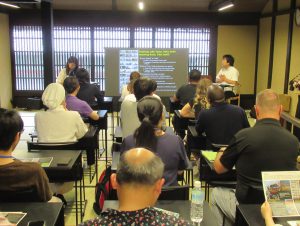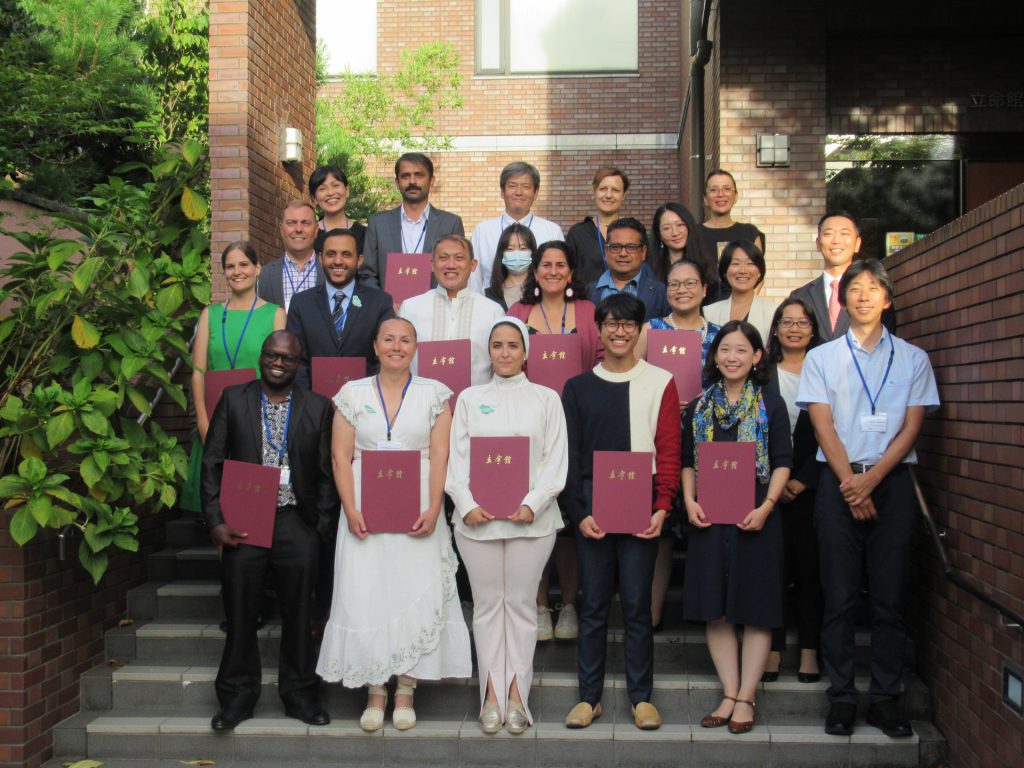UNESCO Chair Programme on Cultural Heritage and Risk Management
INTERNATIONAL TRAINING COURSE (ITC) on DISASTER RISK
MANAGEMENT of CULTURAL HERITAGE 2023, 17th year
Online course:14th August to 1st September 2023,
Onsite course: 11th September to 23rd September 2023 at Kyoto, Kobe, Hirokawa, Yuasa and Nankai city, Japan
International Panel Discussion: 24th September at Kyoto, Japan
Organized by the Institute of Disaster Mitigation for Urban Cultural Heritage, Ritsumeikan University in collaboration with ICCROM
Contributed by UNESCO, ICOM & ICOMOS/ICORP
The UNESCO Chair Programme on Cultural Heritage and Risk Management – 17th INTERNATIONAL TRAINING COURSE (ITC) on DISASTER RISK MANAGEMENT of CULTURAL HERITAGE 2023 was successfully held for five weeks. This year’s course had thirteen participants, two online observers and four interns. These participants and interns were from the USA, Philippines, Spain, Pakistan, Saudi Arabia, Malawi, Hungary, Republic of Korea, Israel, and Yemen. The participants were selected through a competitive selection process which had 139 applicants from various countries and regions in the world. This year’s participants had diverse backgrounds, including cultural heritage managers, disaster risk management experts, decision-makers, emergency managers, and government officials involved in cultural heritage conservation and disaster management.
We are very fortunate to have resource persons from national organizations such as Agency for Cultural Affairs with Tokyo National Research Institute for Cultural Properties and Cultural Heritage Disaster Risk Management Center, the Association for the Preservation of National Temple and Shrine Roof Construction Techniques, Kyoto City Fire Department, Kyoto Prefectural Board of Education, Kyoto National Museum, Kobe City Culture and Sports Bureau, Nohmi Bosai Ltd., Aichi University, National Institute of Technology Akashi College, Yuasa-cho Board of Education, and international organizations such as ICHCAP, KVPT, Loughborough University etc. We would like to thank all colleagues for supporting us and participants from all over the world.
The purposes of this training course are twofold. Firstly, it aims to educate practical experts in the fields of cultural heritage conservation and disaster risk management. Secondly, it focuses on developing a draft plan for disaster risk management to ensure the safety of both people and cultural properties in each cultural heritage site and historical city.
This year, the course was conducted in a hybrid format, with the first three weeks held online, followed by two weeks conducted onsite. Firstly, in the online training program, we conducted live sessions twice a week for 2.5 hours each. One session per week was designated as a feedback session, providing an opportunity for students to consult with resource persons regarding their individual projects. For the onsite course, the lectures were held at the conference room of the DMUCH and various neighboring cities as site visits.
The sub-theme for this year’s course was “Safeguarding and Utilization of Intangible Cultural Heritage for Disaster Risk Management of Cultural Heritage”. It delved into the traditional techniques, skills, and knowledge of wooden architecture as intangible cultural heritage (ICH), festivals (including, float cars, and street events), and the original manufacturing process and techniques of Japanese cuisine – soy sauce. The onsite course included various site visits related to ICH lectures and hands-on experience with roofing work by traditional craftsmen at Kyoto City Cultural Heritage Preservation Technology Training Center, inspection and lectures on the Gion Festival and its operational base, a site visit to the traditional building preservation district of Yuasa-cho known for its making soy sauce, and an inspection and lecture on “Inamura no Hi” in Hirogawa-cho as a disaster memory, along with a site visit and lecture on the pre-recovery plan and seawalls in Kainan City, Wakayama.
We learned about the role of ICH, such as Japan’s traditional techniques and festival mechanisms, in supporting the restoration of tangible cultural heritage in the disaster recovery phase. Simultaneously, we gained insights into Japan’s unique and advanced initiatives on disaster prevention measures, including preserving disaster memories and preparing for future disasters through pre-recovery plans.
On the final day of the course, we hosted an international expert panel discussion titled “Good Practice to Disaster Risk Management of Cultural Heritage. In July of 2023, our ITC team successfully published a book as Routledge Studies in Hazards, Disaster Risk and Climate Change. This panel discussion was also conducted as a book launch event.
The guest lecture was delivered by Elena Mamani, a former participant of the ITC 2014 who received recognition for her outstanding initiative during the 2020 workshops. Additionally, as panelists for the discussion, we were honored to have the first UNESCO Chair Professor, Professor Kanefusa Masuda, Professor Ksenia Chmutina from Loughborough University, Elke Selter from Heritage in Emergencies Belgium, Ang Ming Chee from George Town World Heritage Incorporated, Vanessa Tanner from Kaiwhakahaere Poutairangahia, and our ITC project leader, Professor Takeyuki Okubo. The panel sparked lively discussions regarding the future direction of the course, based upon the content of the published book.
Furthermore, starting from this year, we initiated an internship program as a new endeavor to contribute to the global relations of Ritsumeikan University students through this training course. Four students participated as interns, acquiring knowledge in disaster risk management of cultural heritage and simultaneously gaining valuable experiences by interacting with experts from overseas.
